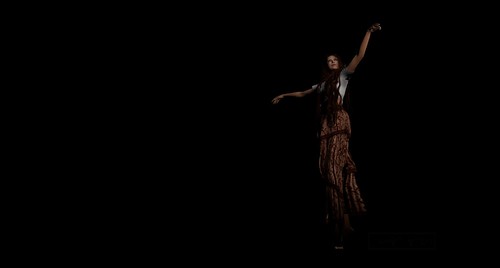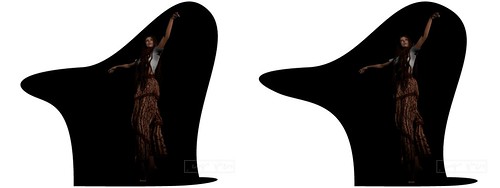Actually, I've done stereo versions of a few of my work for my 365 project, so I wasn't entirely gone. But when my time became scarcer and scarcer, the stereo work fell to the side, because it does take quite a bit of time.
Now that the 365 project is done (after three long years ;) ), I have more time to do other projects and to return to old joys.
I accidentally stumbled on the beauty of "prim light" against a pitch black windlight when I did "End of the Milky Way" for the 365 project.
So, I wanted to play with light sources on other subjects. And I came up with this:
Without prim light, it would be completely black. And it was a single prim light source approximately at the face level. I purposely didn't light the feet directly to show that it was an artificial light (as opposed to windlight) and to avoid lighting the floor (which was set to black and full bright). It gave the impression of the avatar being on stage with one gentle spotlight.
Very simple. Very minimal.
And yet, with stereo framing, I'm able to define the shape of the space around my avatar, as though it were something tangible, like half of a 3D vase:
There is something about this that is very Zen-like. By defining a border around nothingness, I created something. This is what fascinates me about stereo framing.

